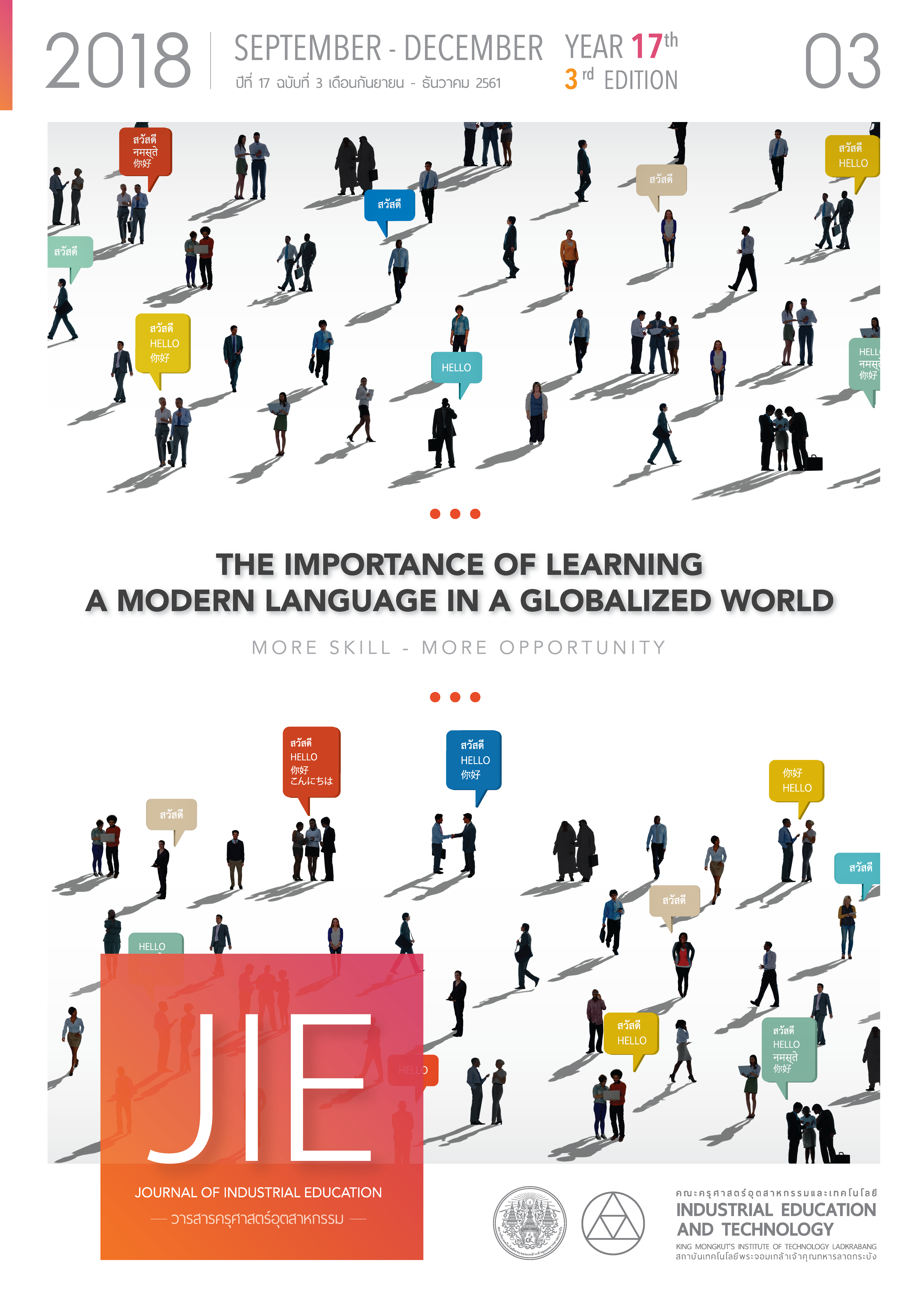THE UTILIZATION OF WASTED LEATHER INTEGRATED TO PRODUCT DESIGN
Keywords:
Utilization, waste leather, product design, reuseAbstract
The objectives of the study are as follows: 1) to investigate the amount and physical characteristics of waste leather; 2) to analyze and develop the approach can be applied to utilize the waste product generated by the furniture manufacturers; 3) to create the product from waste leather; and 4) to evaluate the consumers’ satisfaction with the product made by waste leather. The study’s methodology is divided into 4 stages. First, the unstructured observation and unstructured interview were applied to determine the amount of waste leather and physical characteristics of waste leather produced by three furniture manufacturers. Second, the approach to utilize waste leather according to the concept of reuse was analyzed and improved via conducting material experimentation. A five-scale rating questionnaire was distributed to qualified leather experts to seek for the appropriate techniques. Third, five sketches of the recreated product designed based on the examined effective techniques were introduced to the expert qualified in the field of product design to identify the most potential one. Fourth, a hundred consumers’ satisfaction with the designs of the product was evaluated through conducting a survey. The mean of each consumer’ satisfaction score was compared to the criteria and ranked to find the most impressive design. There are four results revealed by the study. The first one is that seventy to one hundred kilograms of waste leather, which is mostly the cattle leather, were always disposed uselessly. Waste leather can be generated by three phases of the production cycles: production control, production process and post-production. Concerning the second result, it is indicated that the reuse concept has the most potential for creating the product by waste leather through integrating of three techniques, namely weaving, sewing with the machine, and fastening with rivets. Next, the type of product found out to be the most suitable for waste leather are crossbody bag and briefcase, or the idea sketch number two out of five sketches presented to the qualified product design experts. Both the crossbody bag and briefcase are brown and designed in trapezoid shape. Also, they are determined as the most consistent design with human anatomy and have the most aesthetic value (= 4.56, S.D. = 0.58). Finally, the result from the survey shows that the vast majority of the consumers satisfied with the crossbody bag and briefcase invented based on the idea sketch number two through applying sewing with the machine technique (
= 4.51, S.D. = 0.55).
References
[2] Sing Intrarachuto. 2556. Upcycling. Pathum Thani : National Science and Technology Development Agency.
[3] Textile Information Center Thailand Textile Institute. 2558. Establishment of Leather products In Bangkok and suburbs. Retrieved November 23, 2018, from http://www.thaitextile.org.
[4] Punnee Likitwatthana. 2559. Education Research. Bangkok : Faculty of Industry Education and Technology King Mongkut’s Institute of Technology Ladkrabang.
[5] Waro Phengsawat. 2551. Research Methodology. Bangkok : Suwiriyasan.
[6] Watcharaporn Suriyaphiwat. 2560. Modern Business Research Methodology. Bangkok : Chulalongkorn University Press.
[7] Division of the Industrial factory Director Industrial Waste Management and Treatment Technology. 2555. 3Rs Manual Waste management in factory. Ministry of industry.
[8] Watcharin Charungchitsunthon. 2548. I.D. Story Theory & Concept Design Bangkok : I Design Publishing.
[9] Meier Oliveira. 2016. Sustainable Design Applied to Animal Leather form the Footwear Industry. International Fashion and Design Congress, : p. 3629-3636.
[10] Barbara Cimatti. 2016. Eco Design and Sustainable Manufacturing in Fashion: A Case Study in the Luxury Personal Accessories Industry. Elsevier B.V. 2017, Procedia Manufacturing8 (October): p. 393 – 400.
[11] Chullasthira, C. 2017. The Development of Hand woven Silk Patterns for Machine Washing : A Case Study of Nong Bua Daeng Natural dye weaving group. Journal of Industrial Education. 16(1), 58-67.
[12] Chairat Pimbutr. 2559. Design and Development of Scrap Leather to Product Design Souvenirs. Journal of Industrial Technology Ubon Ratchathani Rajabhat University, 5 (January - June 1) : p. 183-192.
Downloads
Published
How to Cite
Issue
Section
License
"The opinions and contents including the words in papers are responsibility by the authors."
"ข้อคิดเห็น เนื้อหา รวมทั้งการใช้ภาษาในบทความถือเป็นความรับผิดชอบของผู้เขียน"



